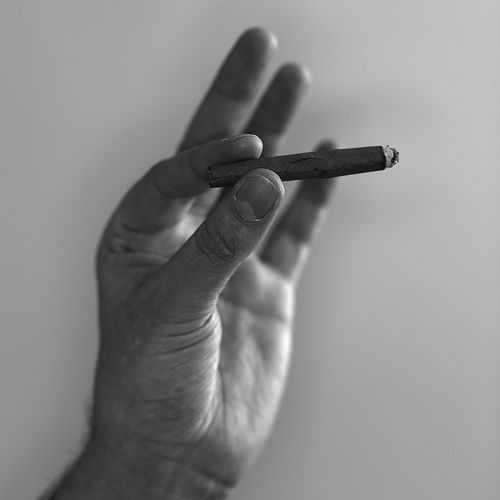Did Marijuana Cause This 20-Year-Old's Death? Parents Say Smoking Pot Drove Matthew Leahy To Suicide

Not a single person has ever died from a marijuana overdose; to O.D., you’d have to consume 20,000 to 40,000 times the amount of tetrahydrocannabinol (THC) — the active ingredient in cannabis — in a joint. But that doesn’t mean there’s no risk of death. The parents of 20-year-old Matthew Leahy believe that his recent suicide at a mental health facility may have been triggered by the effects of smoking pot.
Leahy, from the U.K., was a computer whiz, an expert skier, and a qualified lifeguard before entering the confines of the NHS-run Linden Centre Mental Health unit in Essex as an in-patient. In November, he hung himself. Leahy’s parents were devastated by their son’s death and are still in a great deal of shock that it happened while he was under the surveillance of doctors.
Leahy’s mother, Melanie, told the Daily Mail her son was put on a 24-hour nurse watch only on his first day of admittance in the mental institution. This 24-hour supervision was then reduced to hourly while being watched by a student nurse.
“We have no idea why this was allowed to happen, it was a decision made by the nurses,” Melanie Leahy said. “But, had I known that he wouldn't be watched 24 hours a day, I would never have agreed to let him go. I bitterly regret it.”
Leahy was an honor student who started smoking marijuana at the age of 14. Soon after, he began to go down a slippery slope at school. Teachers reported he wasn’t paying attention in class, and his parents, Melanie and Michael, regularly smelled marijuana on his clothes and noticed a drastic change in his behavior.
“I confronted him about it, but he would deny it,” Melanie Leahy said.
Leahy eventually saw a physician on his own and admitted he smoked pot. Based on the doctor’s medical notes, Leahy stated that he believed the drug was “harmless.” The doctor advised Leahy about the risks associated with marijuana and even suggested for him to stop smoking.
According to the National Institute on Drug Abuse, the effects of marijuana vary from person to person and are dependent on several factors such as their size, weight, and health. The immediate effects of marijuana can last two to four hours after smoking, and typically include: anxiety, hallucinations, detachment from reality and paranoia, among many others.
Melanie Leahy claims that around age 17, her son’s hallucinations greatly worsened. “Terrifyingly, he began saying he felt as if something was crawling over his body,” she said. “I researched it and pointed out to Matthew it was an effect of cannabis smoking.”
People who start smoking pot heavily during early adolescence are more likely to suffer from mental health problems, or more general life problems, such as conflict at home, school or work, according to the University of Washington Alcohol & Drug Abuse Institute.
Leahy’s frequent cannabis use could have triggered a condition that is known as drug-induced psychosis. Marijuana users may experience symptoms of disorientation, memory problems, and hallucinations — seeing or hearing things that are not really there — during a psychotic episode. These symptoms usually appear quickly and last a few days until the effects of marijuana have completely worn off. The increase use of marijuana can make some people psychologically or physically independent, or sometimes both, on the drug.
By the time Leahy was in his late teens, his hallucinations had developed to the point where he was convinced he had threadworms living in his stomach, coming out of his nostrils and mouth, and living in his ears. The deterioration of his mental state caused Leahy to lose his computer job, and he was admitted to Linden Centre for the first after he spent some time in a psychiatric ward at Clacton Hospital after he believed worms were destroying him during a psychotic episode.
Matthew was released in November 2011. But in late 2012, he threatened kill himself with a knife during a psychotic episode, and was readmitted to the Linden Centre in Essex under Section 3 of the Mental Health Act of 1983 — a law similar to the “302” in the U.S., which allows for non-consensual detention of patients at a hospital. In the U.K., this results in in-patient treatment up to six months.
Melanie and Michael were told they could not visit Leahy for the first seven days to give him time to settle. “When we spoke to the ward, the staff denied he was as distressed as he'd made out to us, reassuring us he was in an art class,” said Melanie Leahy.
A year later after Leahy’s death, doctor’s still don’t have answers for his parents. It remains unclear whether the effects of marijuana directly led to the suicide or if the event was triggered by other factors. If marijuana was a major factor in Leahy’s mental illnesses and subsequent death, it wouldn’t be that strange; it is estimated that cannabis users are up to six times more likely to develop schizophrenia.
For more information on the effects of marijuana and mental health, visit www.nami.org.
Published by Medicaldaily.com



























